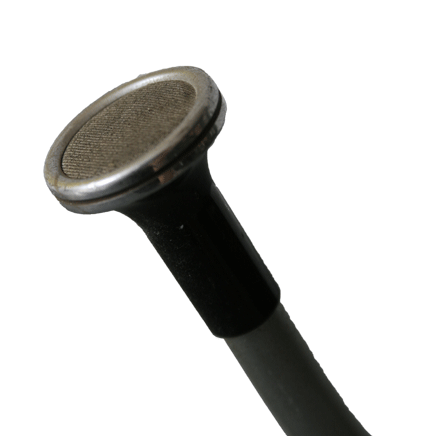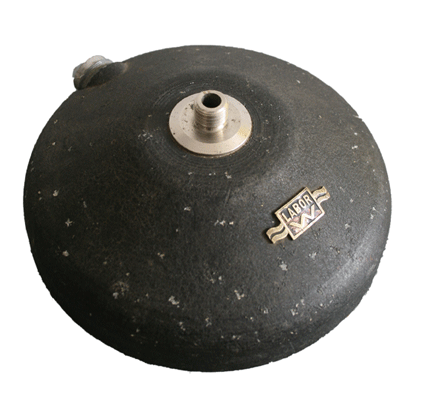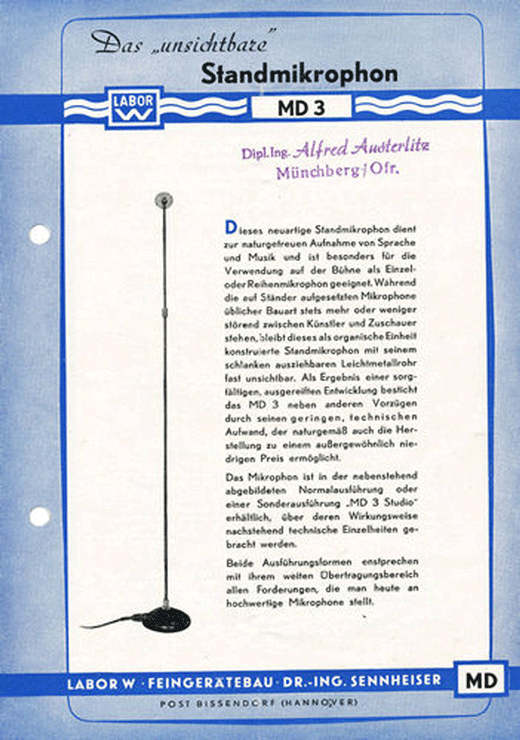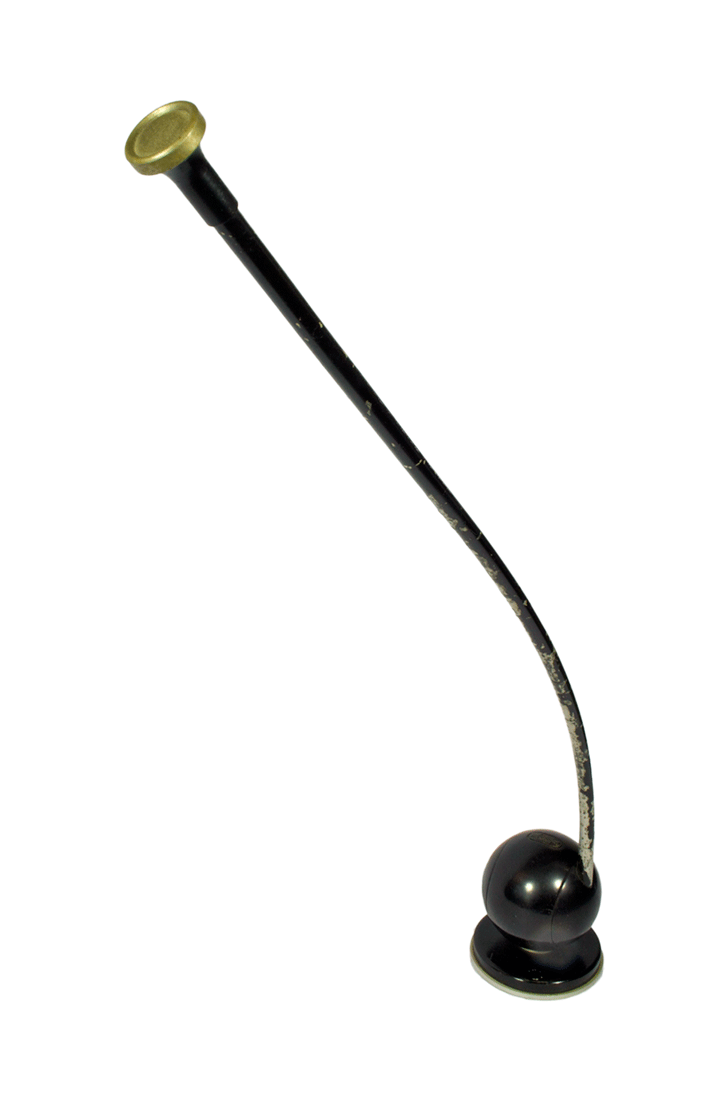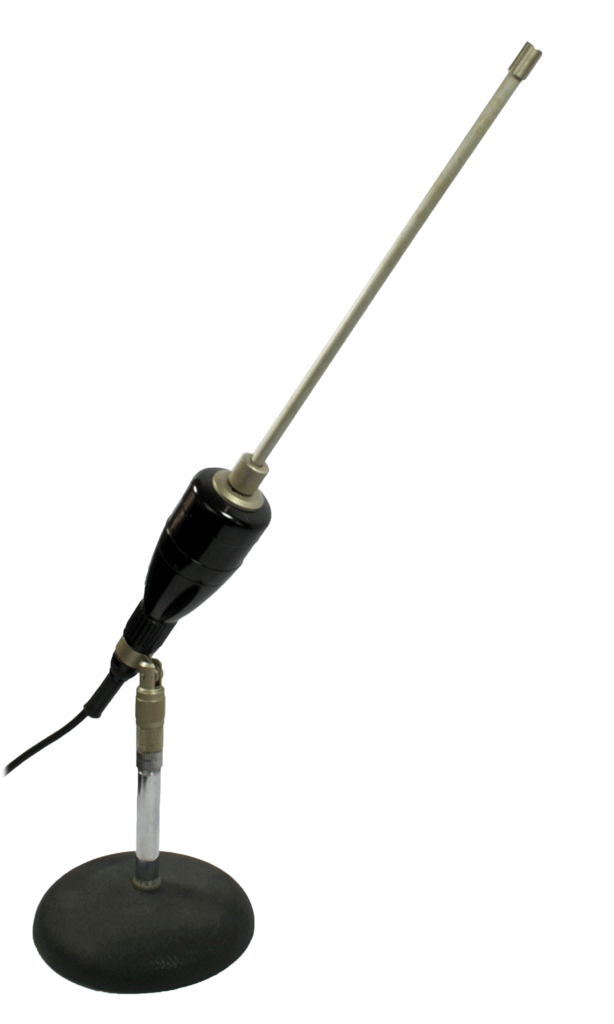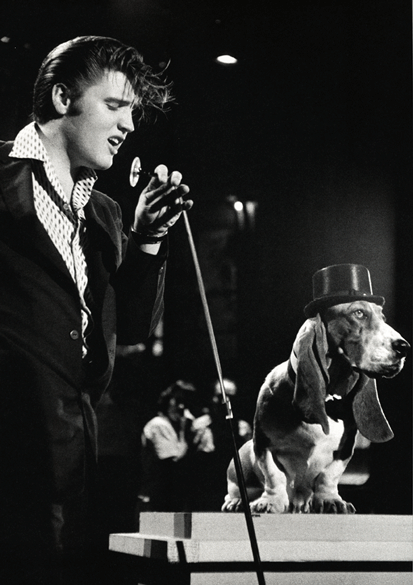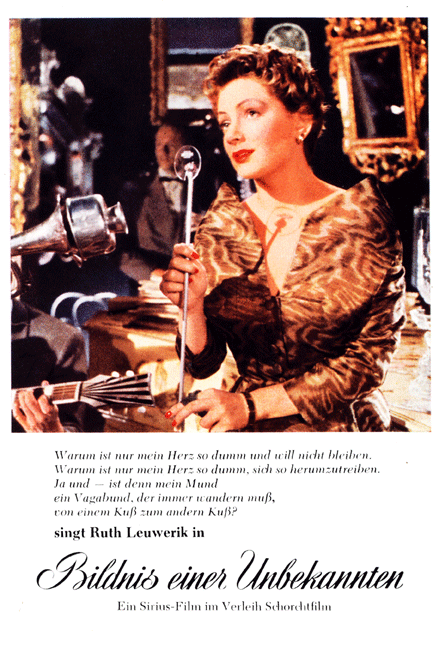|
The Labor W DM 3 is an omnidirectional dynamic, with an uncommon design, intended to make the microphone 'invisible'; the microphone element is mounted in the base, the sound waves reaches it through a tube of adjustable length ( with a maximum of 160 cm).
At its introduction in 1949, two models were presented. The second was a desk model; the DM 3 T (T for 'Tisch' = Table, picture No 4 on the right), based on the same principle. Later the type was renamed as MD 3.
Both were meant for television, but the stand model was also aimed at entertainers who wanted maximum visibility. Sometimes the head was equipped with a plastic transparent baffle, to make it more directive at higher frequencies.
Even the BBC deemed it worthy of use for television programmes, in 1954, but only for use at close range*) and without the plastic baffle, which had too much of an influence on the sound quality. It was also advised not to extend the tube all the way, since that also degraded the audio quality, because of interference inside the tube. The complete BBC report can be found here: http://downloads.bbc.co.uk/rd/pubs/reports/1954-32.pdf . The report mentions American ribbon microphones from 1936, based on the same principle.
Around the globe, many entertainers have used the microphone, of which Elvis and Edith Piaf are the most famous.
The Labor W (later renamed Sennheiser) company was founded shortly after WW 2. When Siemens A.G., Germany's largest telecommunication firm, could no longer obtain microphones from their former supplier Henry Radio, based in Vienna, Jorg Sennheiser stepped in with his new company, 'Labor W' (Laboratory Wennebostel; the town of production, near Hanover). It was founded by squatting the deserted laboratory, where Sennheiser had been working, during the last few years of WW 2, which had been closed down, by the Allied Forces.
The first product was a Volt meter, made with parts found at the laboratory. The microphone for Siemens, the DM 1, was an exact replica of the Henry , but soon their own model, DM 2 (Dynamic Microphone 2) was developed, and marketed both as Siemens and Labor W. This microphone was very similar to the Henry Radio HMR 3 model, but easier, and less time consuming, to produce.
The DM 2 was widely accepted by radio stations, for their reporters. The DM 3 is a direct successor to that model. There is a third DM 3 S (Sonden Mikrofon = measuring microphone) with a 30 cm tube, attached to a DM 2 casing, and a fourth: the DM 3 R (Redner Mikrofon = speaker microphone) with a bent tube, both also from 1949. Perhaps these were the first with the DM 3 denomination.
The DM 2 remained in production until it was replaced by the MD 21, in 1952. That omni microphone is one of Sennheisers legendary products and remains in production unto the present day. The rebranding into 'Sennheiser' happened in 1959; a name now world famous.
*) Interesting, because my DM 3 came from a German rockband, which used it well into the Nineties to record their music during rehearsals. Then again it may just tell us something about their volume while practicing; many bands produce higher soundlevels during rehearsals than on stage or in the studio.
This is one of the types that feature in my book Witnesses of Words. More information about that can be found at www.witnessesofwords.com
It can be ordered directly from there, or from Amazon.uk/ amazon.fr and amazon.de

|
|
|
|
|
|
|
|
Above: DM 3, head, foot with capsule, desk and measuring version
Below: sound, Elvis sings 'Hound Dog' in Steve Allen Show & ad with German movie star Ruth Leuwerik |
|
|
|
|


 Video's
Video's Contact
Contact



